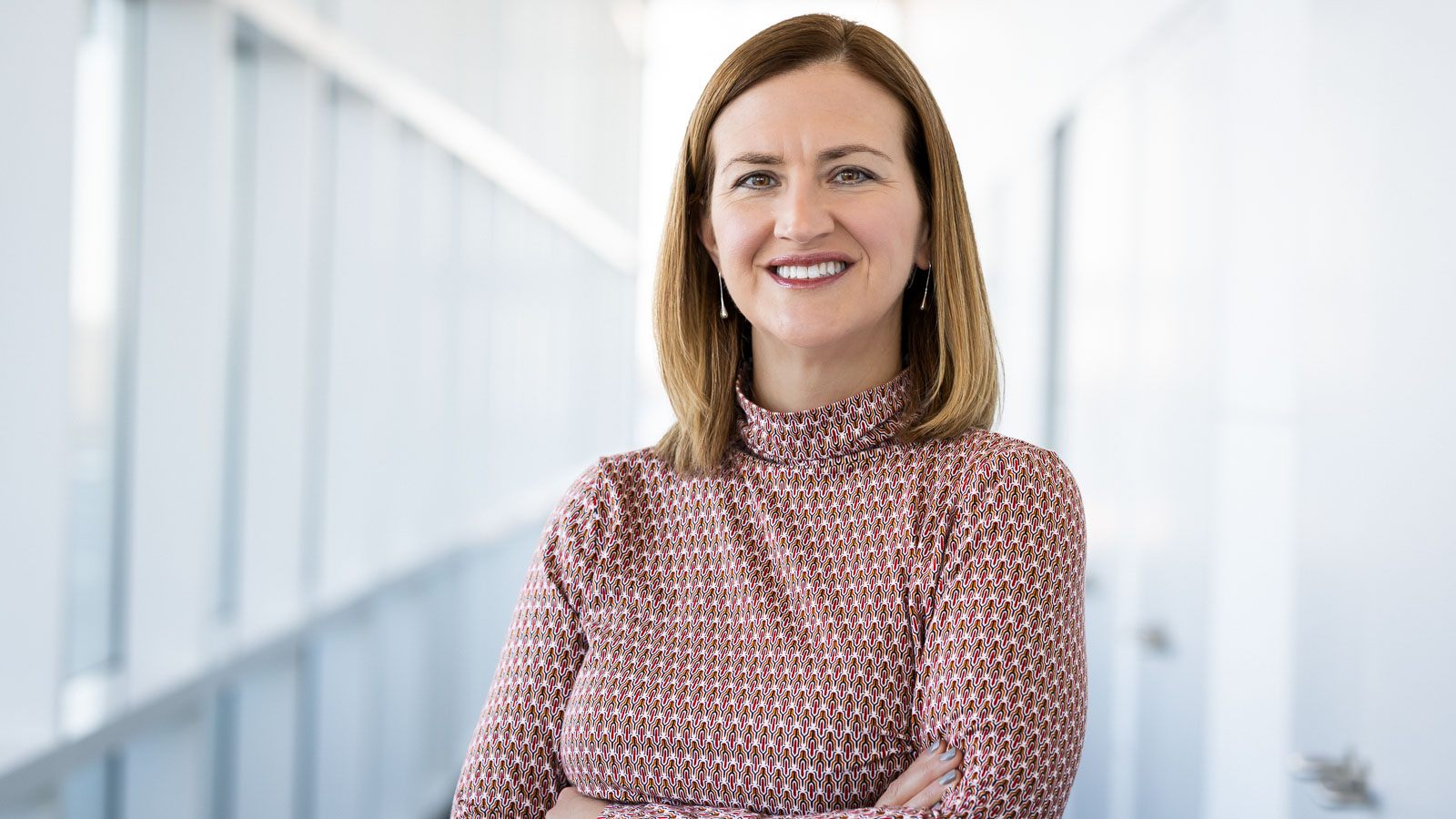Having been a floor coordinator at the Advanced Photon Source, Pedergnana now works in Engineering Support
By Jenna V. Wray | June 4, 2025
Her chief responsibility is to ensure that designs meet quality and safety standards.

The Advanced Photon Source (APS) is an extraordinarily complex facility.
Located at the U.S. Department of Energy’s (DOE) Argonne National Laboratory, the APS, a DOE Office of Science user facility, features a series of powerful particle accelerators. The APS is a powerful X-ray machine that enables thousands of scientists to conduct research each year using ultrabright X-rays for advancements in materials and batteries, to name a couple. It also has a newly upgraded electron storage ring that spans about two-thirds of a mile and includes 72 experiment stations called beamlines.
Every one of these components began with a design, a drawing on paper. Patricia “Patti” Pedergnana is one of the people who makes sure those designs meet rigorous safety and performance standards.
Patti Pedergnana is chair of the PSC Design Review Committee (PDRC), which oversees the review of designs for the entire APS. This may seem like a big job, but Pedergnana is no stranger to hard work. Her parents held blue-collar jobs while raising her in the suburbs of Chicago, and this work ethic served her well in her education.
“Each review is a new opportunity to work with and learn from the brilliance and experience of our standing committee members and ad hoc subject matter experts. I’m blessed to work with such talented, hard-working and inspiring people.” — Patricia Ann Pedergnana, Argonne National Laboratory
In high school, she found she enjoyed biology and chemistry, and she turned her efforts to studying the sciences. She became a first-generation college student, earning a degree in biology from the University of Illinois at Chicago.
“I enjoyed making the unknown known through experiments in a laboratory setting,” Pedergnana said.
For some time, she worked as a microbiologist for a pharmaceutical company. By identifying bacteria, yeasts and molds throughout the production area, she ensured the company was meeting the U.S. Food and Drug Administration’s quality control standards.
In 2003, she joined Argonne. Her job as a floor coordinator was to ensure safety at the APS.
Pedergnana took the responsibilities of this operations position very seriously. While working as a floor coordinator, she returned to school for a management degree, which helped her excel.
Over more than a decade with the APS, Pedergnana learned a lot about APS beamlines and their designs, which has aided her in her next career move. In 2018, she shifted to her current role in the APS Engineering Support division and the chair position on the PDRC.
Pedergnana’s role requires meticulous organization and the ability to adapt to ever-changing priorities, a challenge she embraces with enthusiasm. She also enjoys the collaboration involved in her work. This collaborative spirit is a hallmark of Argonne, where teamwork is a Core Value.
“Each review is a new opportunity to work with and learn from the brilliance and experience of our standing committee members and ad hoc subject matter experts,” Pedergnana said. “I’m blessed to work with such talented, hard-working and inspiring people.”
Additionally, Argonne has recognized Pedergnana for her outstanding contributions to the lab. Her numerous awards include the James B. Porter Jr. Team Award for Outstanding Safety from the UChicago Argonne, LLC Board of Governors as well as many laboratory recognitions of her effort and impact.
Yet it is the work of her and her colleagues on the APS Upgrade project that she finds most significant.
“The workload and commitment by the APS talent to complete this task has been monumental,” she said. “The team effort to complete designs and meet deadlines is beyond anything I have experienced.”
The most exciting aspect of her role, she says, is seeing the designs reviewed by the committee come to life.
“Currently, that is the commissioning of both the new accelerator and the new and returning beamlines,” she said with pride. “It’s wonderful to see these plans become reality!”
